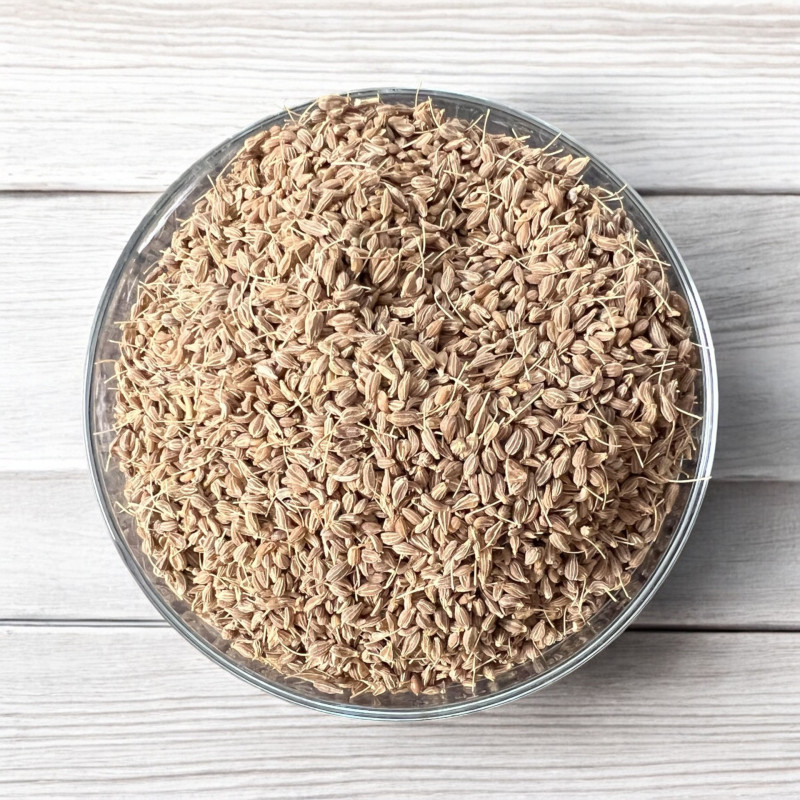
Reference: 10M6741201


Its flavor is very refreshing and distinctly aniseed.
It will add a delightful aroma to your pastries, fish, vegetables, and even your infusions and spirits.
 Delivery
Delivery
Mondial Relay
 Returns
Returns
See conditions
 Payments
Payments
100% secure
Livré en sachet refermable
Culinary and Other Uses:
The seeds are small, gray-brown, with a distinctly refreshing aniseed flavor.
They are used in pastries (such as canistrelli or gibassiers), especially during the holiday season for Christmas cookies, as well as in bread. Some may prefer whole anise seeds over powder in gingerbread or even mix them together!
In fish dishes, the seeds are excellent, especially in broths or for long cooking (in the oven), allowing time to infuse their delightful aroma. For short cooking and sauces, opt for the powder, as whole seeds might remain crunchy.
They are also delicious in vegetables (like ratatouille), liqueurs, and anise-flavored drinks. Anise seeds flavor traditional beverages like anisette, pastis, arak, ouzo, and absinthe.
As an infusion, they are recommended for bloating and digestive issues and work wonderfully when combined with star anise. They also have a calming effect on the digestive system and can increase milk production in breastfeeding.
Green anise should not be confused with related spices like caraway, fennel, and cumin, even though they share many beneficial properties.
Note: Some people may be allergic to anethole, the compound responsible for anise’s flavor.
Who Am I?
Origin: Syria
Scientific Name: Pimpinella anisum Linnaeus
Common Names: Anise, sweet cumin, aniseed
An annual or biennial herbaceous plant in the Umbelliferae family, green anise grows 50-80 cm tall, with green leaves composed of three leaflets. The basal leaves are round, while the upper leaves are finely divided and pointed. The seeds are small, gray, oblong, and retain a small attached stem. All parts of the plant are aromatic.
Likely originating from the eastern Mediterranean and North Africa, green anise spread widely across the temperate Mediterranean regions through human cultivation and is still extensively grown there.
Green anise prefers light soils and sunny, warm exposures. When sown among cabbages in the garden, it helps repel aphids, flies, and caterpillars.
A Bit of History:
Like many plants we know today, green anise was already used in antiquity, over 2,500 years ago, especially for its digestive properties.
Data sheet
Reference: 10M6741201
Reference: badianeE
Reference: fenouilE
Reference: grainesaroussir
Reference: 9N76632004
Brand: Epiciane
Reference: 20711101
Reference: celerigraines
Reference: coriandreE
Reference: 10M6741201
Reference: 2N7072401
Reference: 20703402
Reference: 12N7949601
Reference: fenouilE
Reference: 00033669-0001
Reference: 20701706
Reference: 11N7754201
Reference: 124510

Its flavor is very refreshing and distinctly aniseed.
It will add a delightful aroma to your pastries, fish, vegetables, and even your infusions and spirits.